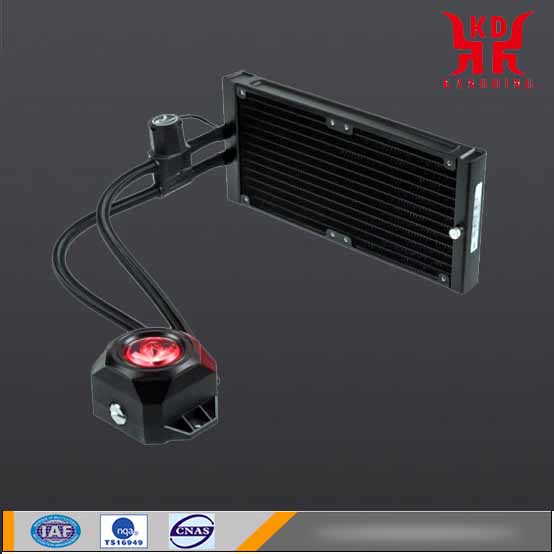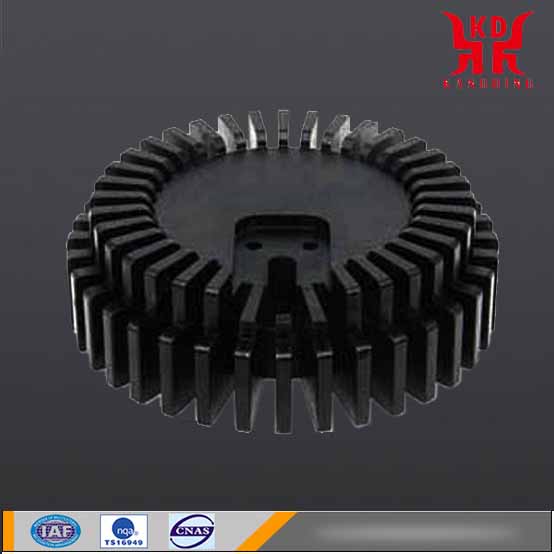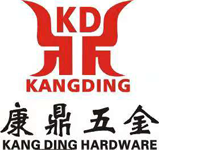
Common heat dissipation methods for electronic components and chips: natural heat dissipation methods, forced heat dissipation methods, liquid cooling methods, thermal isolation heat dissipation methods, and phase change heat storage methods.
With the development of industrial technology, people have also put forward more stringent requirements for the heat dissipation performance of electronic components. There are various heat dissipation methods for electronic components, and various factors need to be comprehensively considered for selection. Generally, the heat dissipation of electronic components is achieved through the surrounding environment or a radiator. The heat dissipation performance of electronic components can be optimized by the following methods.
1. Natural heat dissipation method of electronic components
If you analyze the heat dissipation of electronic components from the perspective of the thermal circuit, the power consumption is equivalent to the temperature difference divided by the electrical resistance. The greater the thermal resistance, the worse the heat dissipation capability of the electronic component, so reducing the internal thermal resistance becomes an important task for the thermal design of the electronic component. The natural heat dissipation or cooling method does not require any external auxiliary energy to allow the electronic components themselves to cool down and dissipate heat. Generally speaking, when we adopt the method of natural heat dissipation, the local heating devices inside the electronic components will achieve the purpose of controlling the temperature by dissipating heat to the surrounding environment. The heat transfer methods mainly include heat conduction, convection and radiation. This method is mainly suitable for the situation where the power required for the operation of electronic components is small, and no heat sink is required, the temperature control requirements are not high, and the heat flux density of the device should not be too large.
2. Forced heat dissipation method of electronic components
The forced heat dissipation of electronic components should be carried out with the help of fans, heat sinks and other equipment, which is simple and effective. The forced heat dissipation method can force the air around the electronic components to flow, allowing the airflow to take away the heat emitted by the electronic components. This method of electronic components is particularly suitable for applications where air flows or where there is space to accommodate local heat sinks. In order to achieve the purpose of forced heat dissipation or cooling, we can increase the heat dissipation area on the surface of the radiator, and often use finned fins as a local radiator to reduce thermal resistance and improve heat dissipation efficiency. Sometimes faced with the heat dissipation problem of high-power electronic components, for this problem, spoilers can be added to the heat sink profile to induce turbulence, so as to improve the effect of heat exchange and heat dissipation.

3. Liquid cooling method for electronic components
For the heat dissipation of chips and chipsets, we often use liquid cooling methods. When the indirect liquid cooling method is used, the liquid coolant does not directly contact the surface of the electronic component. The heat generated by the electronic component is transferred from the electronic component to the liquid coolant through the liquid cold plate or the corresponding auxiliary equipment of the liquid cold plate. In addition, a direct liquid cooling method can also be used, so that the coolant directly contacts the electronic components, and the heat is directly taken away by the coolant, which can achieve the purpose of cooling and heat dissipation. For electronic components with high heat consumption volume and density or under high temperature environment, the heat dissipation method generally chooses this direct liquid cooling method. With the development of the technical level, the low-cold immersion method and vibration encounter the atomization cooling method were born, and the heat dissipation performance of these two methods is more ideal.
4. Thermal isolation and heat dissipation method for electronic components
Thermal insulation technology can also be applied to the heat dissipation and cooling of electronic components. This technology uses low thermal conductivity insulation materials to achieve non-vacuum insulation. This method is based on the theory of heat transfer, and its insulation effect will be affected by the thickness of the insulation material and the thermal conductivity of the material. According to the principle of heat conduction, the higher the temperature, the stronger the thermal conductivity of the insulating material, and the greater the radiation heat transfer capacity of the porous medium inside the insulating material. Therefore, the long-term operation of the equipment will result in the reduction of the thermal insulation effect. For this reason, it is necessary to control the running time of the equipment.
5. Electronic phase change heat storage and heat dissipation method
In order to improve the heat dissipation effect of electronic components, the latent heat of phase change materials can be used to absorb the heat generated during the operation of electronic devices under normal pressure, so as to achieve the purpose of protecting electronic components. In general industry, the method of filling the thermal storage unit with alkane-based phase change materials is often adopted. The method of physically changing the latent heat of the solid and liquid phases is used to absorb the heat emitted by the chip and keep it in a low temperature state, which lasts for a long time and the effect is very ideal.








